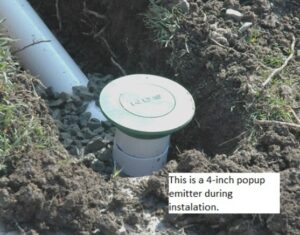sandblasting San Antonio TX is a powerful cleaning and surface preparation technique used in various industries, from construction to automotive and even lead removal. Whether you’re looking to restore an old building, clean metal surfaces, or handle lead abatement, understanding the ins and outs of sandblasting is essential. This guide will walk you through everything you need to know about abrasive blasting, including its techniques, tips, and the tools you’ll need for a successful job.
What is Sandblasting?
At its core, sandblasting is a process that uses a high-powered stream of abrasive materials—like sand, glass beads, or other media—blasted under high pressure onto a surface to clean, smooth, or shape it. Abrasive blasting is the technical term for this process, but most people refer to it simply as sandblasting due to its common use of sand.
While sandblasting has been traditionally used for cleaning metal, brick, and concrete, it’s also highly effective for lead removal from surfaces during lead abatement projects, such as in older homes or buildings built before 1978, when lead-based paint was common.
How Sandblasting Works: The Basics
Sandblasting works by using compressed air to shoot a stream of abrasive material at high velocity towards a target surface. The abrasive particles scrape off contaminants, dirt, or coatings, preparing the surface for painting, refinishing, or other treatments.
The process involves a sandblasting machine, which consists of:
• Compressor: Provides the pressurized air that propels the abrasive material.
• Blast Hose: Carries the air and abrasive to the nozzle.
• Nozzle: Directs the abrasive onto the surface being cleaned or prepared.
• Abrasive Media: The material used for blasting, which can be sand, glass beads, or other materials depending on the job’s requirements.
Sandblasting Techniques: Which One is Right for Your Project?
Different sandblasting techniques are available depending on the material being cleaned and the desired result. Let’s take a look at some of the most common techniques and their uses.
1. Traditional Sandblasting
Traditional sandblasting uses sand as the abrasive material. While effective, it’s not always the best option for delicate surfaces, as the abrasive particles can cause pitting. This technique is typically used for:
• Concrete cleaning: Removing old paint or coatings from walls, floors, and walkways.
• Metal cleaning: Removing rust, paint, and contaminants from metal surfaces.
• Lead removal: For lead-based paint, traditional sandblasting can strip away the harmful layers, but dust and particles can become airborne, requiring precautions.
2. Dustless Blasting
A more modern and safer option, dustless blasting uses a mix of water and abrasive media to suppress the dust that comes with traditional sandblasting. This method is particularly useful for lead abatement projects, as it reduces the environmental hazards caused by lead dust. It’s also ideal for cleaning delicate surfaces, as the water prevents over-scratching and damage.
Dustless blasting is commonly used for:
• Lead paint removal: Safe and effective for homes and buildings that contain lead-based paint.
• Vehicle restoration: Cleaning auto parts and removing old coatings without damaging the underlying surfaces.
• Graffiti removal: Safely eliminating unwanted graffiti from surfaces.
3. Shot Blasting
In shot blasting, steel balls or other small, rounded abrasives are propelled against a surface. Unlike sandblasting, which uses angular abrasive particles, shot blasting is gentler and can be used for high-speed cleaning of floors and concrete surfaces. It’s especially effective for removing old coatings from large, flat areas.
Shot blasting is typically used for:
• Concrete floor preparation: Ideal for industrial settings where floors need to be prepped for coatings.
• Rust and coating removal: Cleaning metal parts in automotive or industrial applications.
Sandblasting for Lead Abatement: What Homeowners Need to Know
If your home was built before 1978, there’s a possibility it may have lead-based paint. Lead abatement is critical when removing lead hazards from older homes, and sandblasting service is one of the most effective techniques for lead removal. However, it’s essential to approach this task with caution, as improper handling of lead can result in dangerous contamination.
Key Points for Lead Removal Using Sandblasting:
• Dust Control: Traditional sandblasting generates a significant amount of dust, which is harmful, especially during lead abatement. To mitigate this risk, choose dustless blasting to capture and contain the dust.
• Protective Gear: Always wear appropriate personal protective equipment (PPE) when performing lead removal, such as respirators, gloves, and protective clothing.
• Professional Service: Hiring a sandblasting service with expertise in lead abatement ensures the job is done correctly and safely. These professionals follow strict guidelines to minimize health risks and environmental impact.
Tips for Effective Sandblasting
Whether you’re handling a DIY project or working with a sandblasting service, there are several tips you can follow to ensure your abrasive blasting job is both safe and effective.
1. Choose the Right Abrasive Media
Different projects require different types of abrasive materials. For example:
• Silica Sand: Commonly used for heavy-duty industrial applications but should be avoided for lead paint removal due to the potential health risks of inhaling silica dust.
• Glass Beads: Ideal for delicate surfaces and lead paint removal because they cause less surface damage.
• Crushed Glass: Often used for lead abatement and other abrasive blasting tasks, as it’s non-toxic and effective for cleaning without damaging underlying surfaces.
2. Proper Surface Preparation
Before starting the abrasive blasting process, ensure the surface is adequately prepared. Remove large debris or contaminants, and make sure the area is well-ventilated (especially if you’re working on a lead removal project).
3. Follow Safety Protocols
Always prioritize safety. For lead abatement, ensure the space is sealed off to prevent lead dust from contaminating other areas of the home. Use HEPA filters and vacuums to clean up residual dust.
Sandblasting Service vs. DIY: Which Option Is Best for You?
When it comes to lead removal and lead abatement, you may be tempted to tackle the job yourself. However, it’s crucial to weigh the pros and cons of DIY sandblasting versus hiring a professional sandblasting service.
DIY Sandblasting:
• Pros: More affordable for small, straightforward tasks like cleaning concrete or removing rust.
• Cons: Requires significant safety precautions, knowledge, and the right equipment. Not ideal for lead abatement, as improper handling can lead to exposure to toxic lead dust.
Hiring a Professional Sandblasting Service:
• Pros: Experienced professionals can safely handle lead removal using specialized equipment like dustless blasting, reducing the risks associated with lead abatement. They can ensure the job is done quickly and effectively.
• Cons: More expensive than DIY options, but the benefits far outweigh the potential risks.
Conclusion
Sandblasting is an effective technique for cleaning and surface preparation, particularly when lead removal and lead abatement are involved. While abrasive blasting and sandblasting services offer powerful solutions for lead paint removal Glendale CA, it’s essential to choose the right technique based on your specific needs and the type of project you’re undertaking.
If you’re dealing with lead abatement, it’s always recommended to hire a professional sandblasting service to ensure safe and effective removal. Whether you choose traditional sandblasting, dustless blasting, or another method, prioritizing safety and following proper procedures will keep your family and home safe from lead hazards.




More Stories
Louis Vuitton Wall Art: The Ultimate Statement in Luxury Interior Decor
How to Choose the Right Wedding Photographer in Denver Without Stress
What to Know Before Hiring a Gutter Company in Gainesville FL: A Friendly Guide